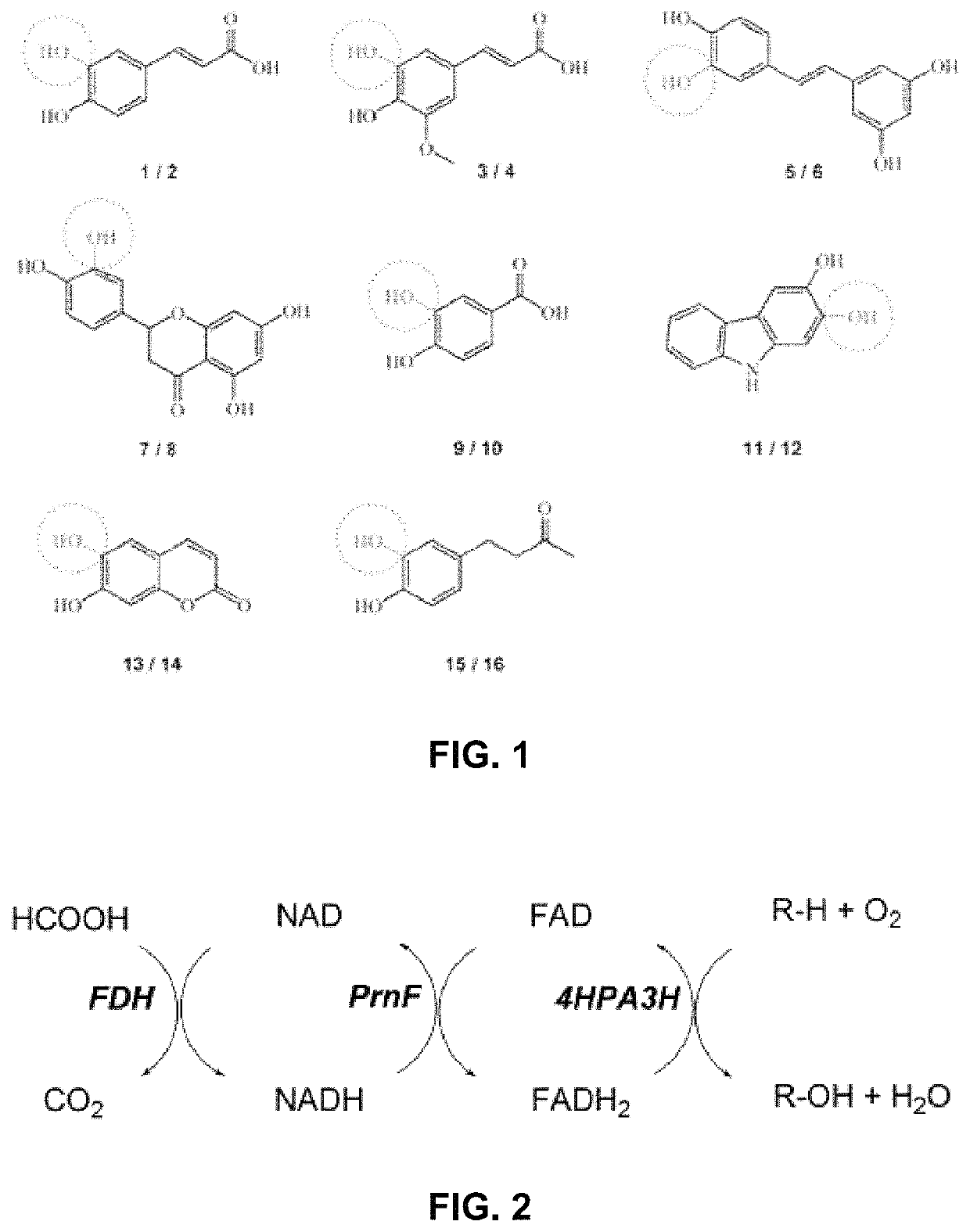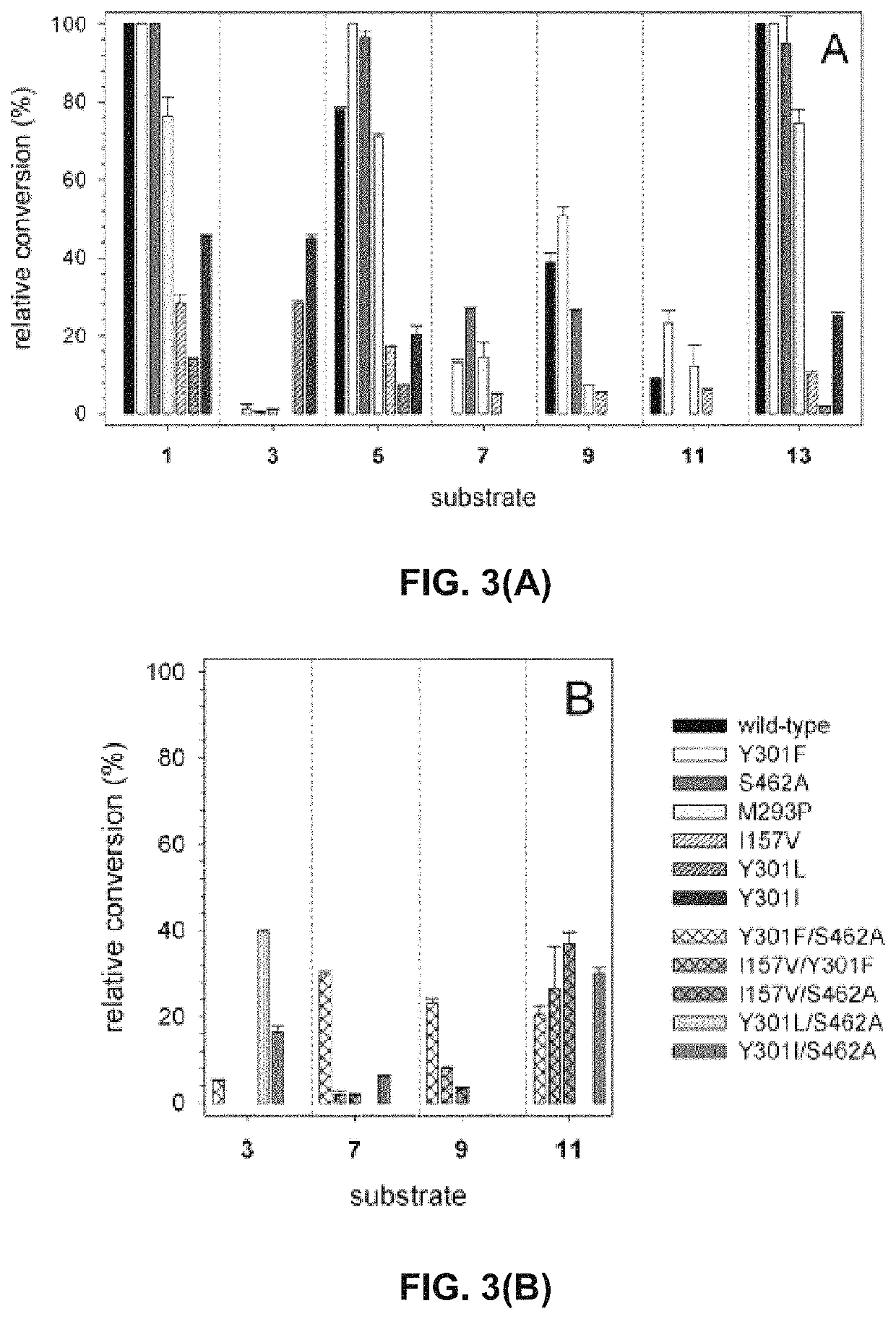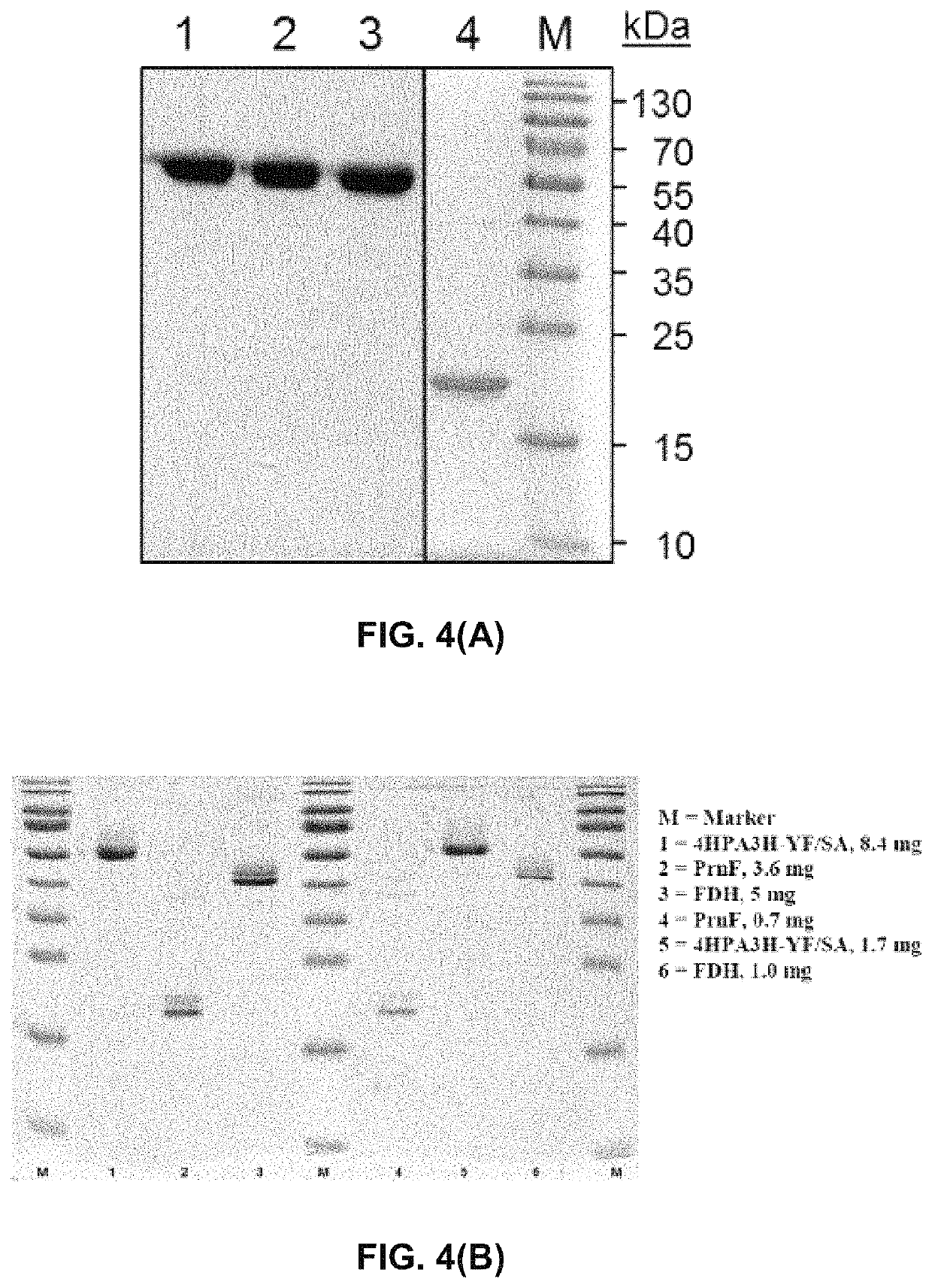Mutant 4-hydroxyphenylacetate 3-hydroxylases and uses thereof
a technology of phenylacetate and phenylacetate, which is applied in the field of biotechnological methods genetically modified enzymes, can solve the problems of not being able to achieve the effect of reducing the oxidation rate of phenylacetate, not being able to achieve the oxidation process at a specific flavonoid ring position, and not being able to achieve the oxidation process in a single step, etc., and achieves the effect of improving
- Summary
- Abstract
- Description
- Claims
- Application Information
AI Technical Summary
Benefits of technology
Problems solved by technology
Method used
Image
Examples
example 1
odeling, Identification of Relevant Positions in the Active Site of 4HPA3H and Protein Expression
[0105]The wild-type 4HPA3H underlying the analysis conducted for the present invention does not possess the ability to hydroxylate ferulic acid as does a homologous protein from Pseudomonas aeruginosa. To optimize the 4HPA3H for the purpose of the present invention and to gain insight into the architecture of the individual active sites, the three-dimensional structures of 4HPA3H and the corresponding Pseudomonas aeruginosa enzyme were modeled based on crystallographic data of the related enzyme from Thermus thermophilus (PDB accession 2YYJ). Both models were aligned to the template which also contains the substrate 4-hydroxyphenylacetate and FAD to inspect the active site of the enzyme 4HPA3H which are proximate to the aromatic ring of 4-hydroxyphenylacetate bound in the active site for the targeted mutagenesis fur the purpose of the present application. Notably, only three positions wh...
example 2
ydroxylation Reactions and Impact of 4HPA3H
[0107]In order to probe the substrate requirements of 4HPa3H from E. coli, whole-cell biocatalysts were used which proved to be well suited for conducting hydroxylation reactions. The expression strain BL21(DE3) was used producing high levels of the recombinant monooxygenase (up to 246 mg l−1 of culture) under auto-inducing conditions, but the cells were not co-transformed with a plasmid harboring the gene for a flavin reductase component as the endogenous activity proved to be sufficient to enable in vivo transformation of substrates. Suspensions of the cells were tested for hydroxylation of a panel of eight phenolic compounds (FIG. 1) which belong to different classes of natural products: we included (I) phenolic acids and ketones such as p-coumaric acid (1), ferulic acid (3), rheosmin (15) and p-hydroxybenzoic acid (9), (II) polycyclic compounds such as the hydroxycoumarin umbelliferone (13), the stilbene resveratrol (5) and the flavonoi...
example 3
pecificity of 4HPA3H and Variants
[0112]To gain structural information on the hydroxylation products, we performed whole-cell biotransformations in a large scale (500 mL of cell suspension). Each substrate was to converted by the enzyme variant that showed highest conversion in the analytic in vivo reactions (see above). Similar to those transformations, the catechol products were extracted from the reaction mixture after 16 hours of incubation. The compounds which were purified by preparative reserved-phase HPLC, were identified as the catechols shown in FIG. 1 by 1H-NMR, MS and MS2 measurements. Noteworthy, 4HPA3H and its variants demonstrated strict regio- and product specificity. In contrast to the enzyme from Pseudomonas aeruginosa, which performs sequential hydroxylation, no further conversion of the catechols into pyrogallol-like polyphenols was observed for both the wild-type enzyme and its variants.
PUM
| Property | Measurement | Unit |
|---|---|---|
| reaction time | aaaaa | aaaaa |
| pH | aaaaa | aaaaa |
| flow rate | aaaaa | aaaaa |
Abstract
Description
Claims
Application Information
 Login to View More
Login to View More - R&D
- Intellectual Property
- Life Sciences
- Materials
- Tech Scout
- Unparalleled Data Quality
- Higher Quality Content
- 60% Fewer Hallucinations
Browse by: Latest US Patents, China's latest patents, Technical Efficacy Thesaurus, Application Domain, Technology Topic, Popular Technical Reports.
© 2025 PatSnap. All rights reserved.Legal|Privacy policy|Modern Slavery Act Transparency Statement|Sitemap|About US| Contact US: help@patsnap.com



